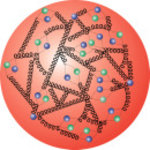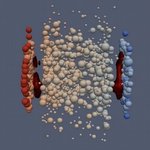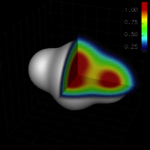GSI Theory Departments
All matter in the universe consists of atoms, where the main mass is concentrated in the nucleus made up of protons and neutrons.

The main objective of the Hadron and QCD Theory are predictions for the experimental programme with the focus on the HADES and PANDA experiments at FAIR. Particular emphasis is put on the synergetic application of two complementary methods in hadron physics: effective field theory (EFT) approaches for coupled-channel systems and simulations of QCD in discretized space-time (Lattice QCD).

The properties of hadrons and their interactions are an input for detailed dynamical calculations of the time evolution of heavy-ion collisions. Within the explosive process, when two ions collide at velocities close to the speed of light, strongly-interacting matter under extreme conditions of temperature and density is formed. This is the focus of the department Hot and Dense QCD Matter.

The strong interaction governs the structure of nuclei and in combination with the weak interaction determines nuclear reactions. Within the Nuclear Astrophysics and Structure department we develop micropscopic models for structure and reactions that support the experimental activities at GSI/FAIR. Employing these advances we perform sophisticated hydrodynamical simulations to investigate the dynamics and nucleosynthesis of elements in different astrophysical environments like supernovae or neutron star mergers.
All activities of the theory groups are strongly linked to the experimental activities at GSI/FAIR, since theoretical calculations are indispensable to gain insights from measurements. On the one hand theoretical predictions allow to test fundamental concepts experimentally. On the other hand, the interpretation of complex measurements is rarely possible without theoretical input. Therefore, the theory groups at GSI work closely together with their experimental colleagues. The main goal is to develop the theoretical tools that permit to exploit the full potential of the GSI/FAIR facility.








